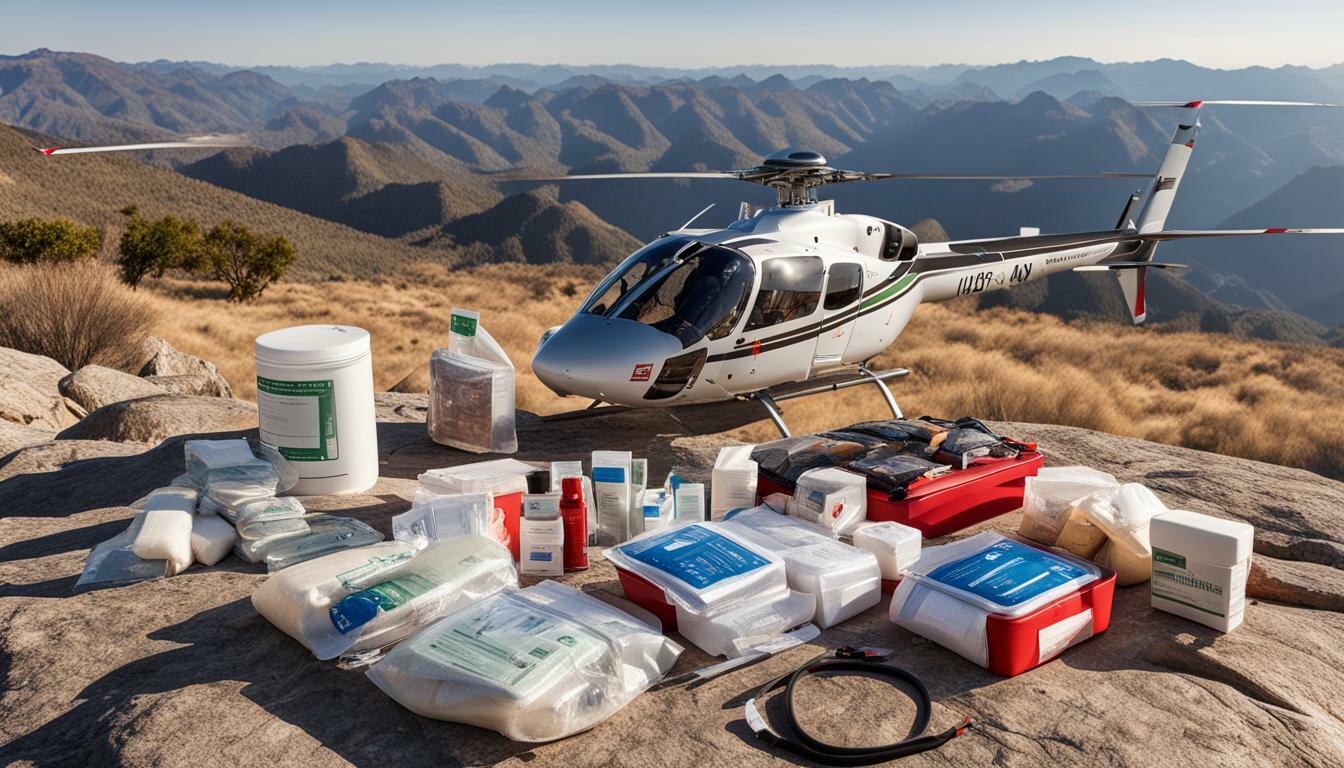Embarking on a scenic helicopter tour is an excellent way to experience breathtaking views and explore new landscapes. However, it’s essential to be prepared for any health emergencies that may arise during these aerial adventures. While your tour operator may provide first aid supplies, having your own well-stocked first aid kit can go a long way in ensuring your safety and well-being.
When it comes to aerial adventures, there are specific health considerations to keep in mind. These include altitude sickness, motion sickness, dehydration, and sunburn. However, by having essential first aid kits tailored for helicopter tours, you can address these concerns and enjoy your adventure with peace of mind.
Key Takeaways:
- Having your own well-stocked first aid kit is important for ensuring your safety and well-being during helicopter tours
- There are specific health considerations to keep in mind when it comes to aerial adventures, which can be addressed with appropriate first aid supplies
- Don’t solely rely on the tour operator’s first aid supplies, bring your kit to give you peace of mind
Helicopter Tour Safety Kits: Ensuring Emergency Preparedness
Helicopter tours offer a unique and breathtaking experience. However, they come with their own set of risks and safety concerns. It is essential to be prepared for any emergency during aerial adventures. Helicopter tour safety kits play a vital role in ensuring the safety and well-being of passengers.
Emergency Preparedness for Aerial Adventures
A well-equipped helicopter tour safety kit should contain essential items such as first aid supplies, communication devices, and survival tools. The kit should be easily accessible and readily available for use in case of an emergency.
Helicopter Tour Safety Kits Contents
| Item | Purpose |
|---|---|
| First aid supplies | To treat injuries and illnesses that may occur during the tour |
| Communication devices | To call for help in case of an emergency |
| Survival tools | To provide basic necessities such as food, water, and shelter in emergency situations |
Why Helicopter Tour Safety Kits are Essential
Helicopter tours often take place in remote locations, making it difficult to access medical help in case of an emergency. Having a well-equipped safety kit can make all the difference in saving lives and preventing further harm.

The image above highlights some of the essential items that should be included in a helicopter tour safety kit. It is crucial to choose a safety kit that is specifically designed for helicopter tours and meets industry standards.
Emergency Preparedness Training
In addition to having the right safety kit, it is equally important to have well-trained staff who can respond effectively to emergency situations. Staff should receive adequate training on emergency preparedness, first aid, and safety procedures. This ensures that they are adequately equipped to handle any emergency situation that may arise during the tour.
Overall, helicopter tour safety kits play a critical role in ensuring emergency preparedness and passenger safety during aerial adventures. By having the right safety equipment and well-trained staff, passengers can enjoy the breathtaking views of the landscape with peace of mind.
Helicopter Tour First Aid Supplies: Addressing Health Concerns
Scenic helicopter tours offer breathtaking views from high above, but they also present unique health concerns that need to be addressed. When packing for a helicopter tour, it’s essential to include first aid supplies that are tailored to the specific needs of aerial adventures. In this section, we will discuss the top scenic tour health essentials that should be included in your first aid kit.
Helicopter Tour First Aid Kits: The Basics
First aid kits for helicopter tours must contain basic supplies for addressing common medical issues such as motion sickness, headaches, and minor cuts and scrapes. It’s also important to include items that can provide relief from altitude sickness, such as oxygen canisters and medication for nausea and dizziness.
Additional First Aid Supplies for Helicopter Tours
| Item | Purpose |
|---|---|
| Insect Repellent | Protects passengers from mosquito and insect bites during outdoor stops. |
| Sunscreen | Prevents sunburn and skin damage during extended exposure to UV rays. |
| Snake Bite Kit | Provides first aid in the event of a snake bite. |
| Emergency Blanket | Keeps passengers warm and dry in the event of an emergency landing. |
Expert Tip: It’s also a good idea to include a basic first aid manual in your kit, as well as any medication that specific passengers may require, such as pain relievers or allergy medication. Be sure to check with your tour operator for any specific recommendations.
By packing the right supplies, you can ensure that you’re prepared for any health concerns that may arise during your helicopter tour. In the next section, we will explore the other safety equipment that you should consider when planning for an aerial adventure.

Aerial Adventure Safety Equipment: Beyond First Aid Kits
While having essential first aid kits for helicopter tours is crucial, it is not the only safety equipment that should be considered. As part of ensuring emergency preparedness and overall passenger safety, helicopter tour companies should also equip their aircraft with additional safety equipment and emergency response supplies.
Aerial Adventure Safety Equipment refers to the range of safety equipment and supplies that should be on board during helicopter tours. These safety measures can include but are not limited to:
| Equipment | Purpose |
|---|---|
| Fire Extinguishers | To put out fires caused by equipment malfunction, electrical arcing, or other sources |
| Emergency Flares | To signal for help or provide illumination during an emergency situation |
| Survival Kits | To provide necessary supplies such as food, water, and shelter during an unexpected emergency situation |
| GPS and Communication Equipment | To communicate with emergency services and provide location information in case of an incident or accident |
Having these emergency response supplies and additional safety measures can greatly enhance the overall safety of helicopter tours. These measures can help prevent and manage potential hazards, minimize the impact of accidents or incidents, and ensure proper emergency response and passenger care.
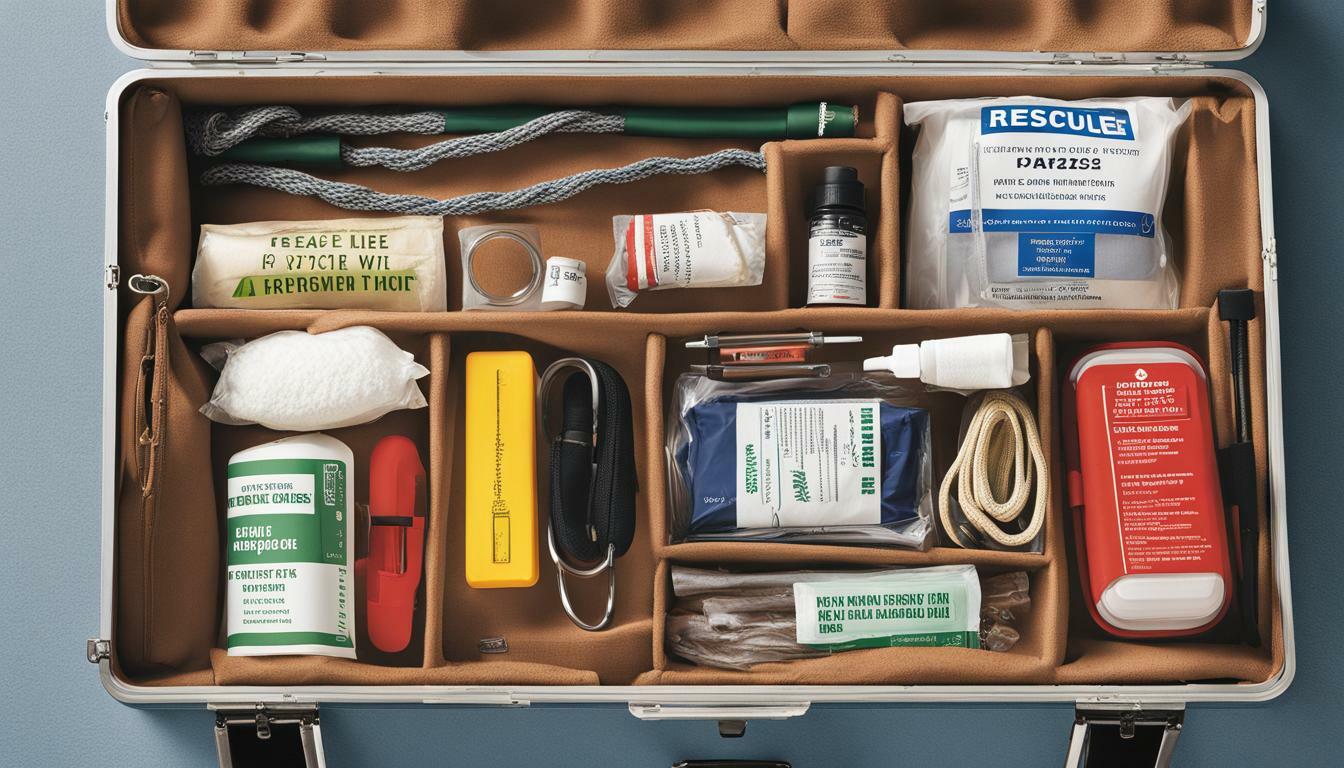
It’s important to note that the specific safety equipment required may vary depending on the type of helicopter tour and the location of the operation. Companies should consult with relevant safety experts and regulatory bodies to determine the necessary equipment and supplies for their helicopter tour operations.
Aerial Adventure Safety Equipment: Beyond First Aid Kits
While first aid kits are an essential component of aerial adventure safety, they are not the only safety measure that should be considered. In addition to equipping helicopters with first aid supplies, it is important to ensure that aircraft are also equipped with emergency response supplies and additional safety measures. Having a comprehensive approach to aerial adventure safety, which includes essential first aid kits and other safety equipment, can help companies minimize potential risks and ensure the health and safety of passengers during helicopter tours.
Choosing the Right First Aid Kits for Outdoor Helicopter Excursions
When it comes to planning an outdoor helicopter excursion, it’s crucial to choose the right first aid kit to ensure the safety and well-being of passengers. A comprehensive first aid kit for aerial adventures should include all the necessary items to address common health concerns that may arise during the tour.
Before selecting a first aid kit, consider the duration and type of helicopter tour you’ll be embarking on. A longer tour may require a more extensive kit with additional supplies. Likewise, tours in remote or high-altitude locations may require specific equipment to address altitude sickness or other related concerns.
Some key items to look for in a first aid kit for outdoor helicopter excursions include:
- Adhesive bandages and gauze
- Antiseptic wipes and antibiotic ointment
- Pain relievers and antihistamines
- Medical gloves and scissors
- Emergency blanket and whistle
It’s also important to consider the quality and durability of the first aid kit. Look for products that are designed for outdoor use and are made with high-quality materials. Make sure the kit is compact and easy to carry, but also has enough space to add additional items if necessary.
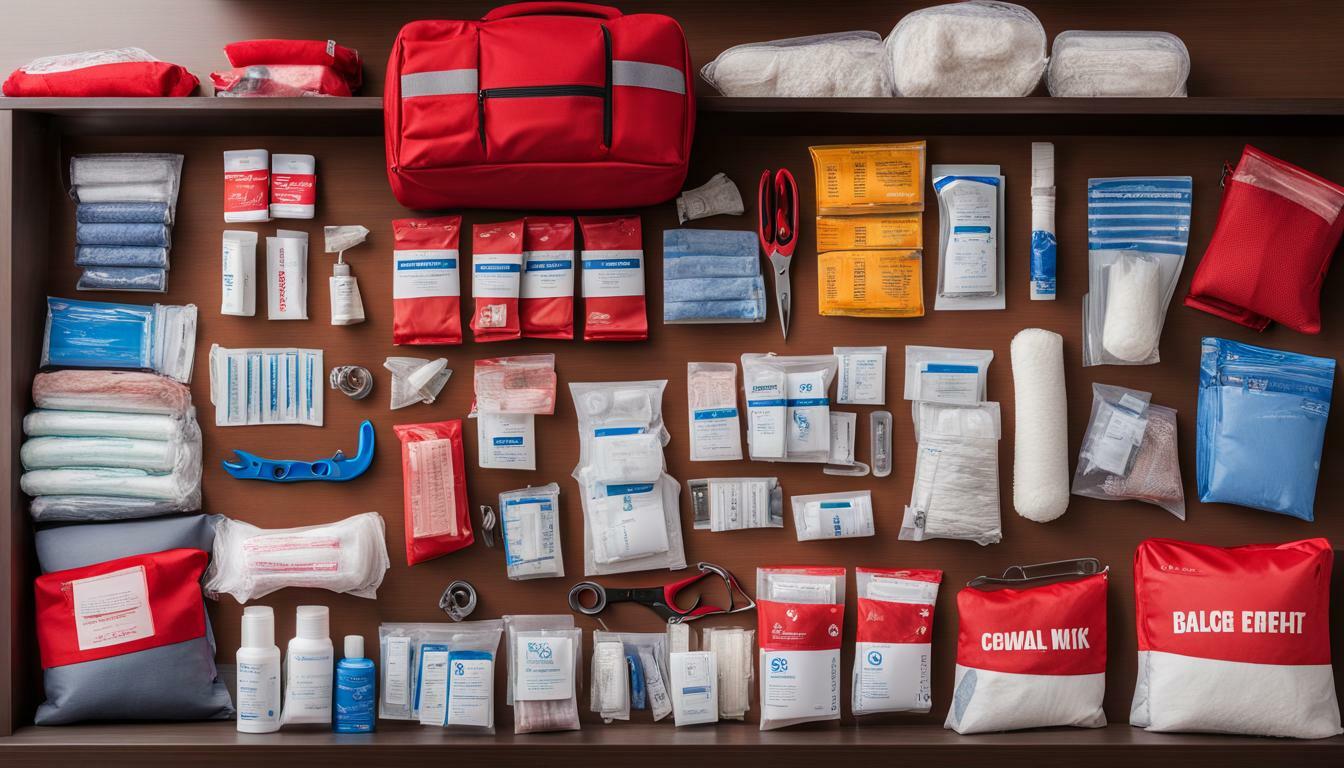
Overall, choosing the right first aid kit is an essential part of ensuring the safety of passengers during outdoor helicopter excursions. By selecting a comprehensive and high-quality kit, you can be prepared for any health concerns that may arise and ensure a safe and enjoyable aerial adventure.
Ensuring Safety Compliance: Regulations and Standards
Ensuring safety compliance is a critical aspect of helicopter tours, and adhering to regulations and standards is essential for maintaining a safe environment for passengers.
The Civil Aviation Authority (CAA) sets the safety regulations and standards for helicopter tours in the UK. These regulations apply to all helicopter operators, regardless of the type of operation or commercial status.
The CAA holds all helicopter operators accountable for the safety and welfare of their passengers, and non-compliance with these regulations can result in penalties or even suspension of the operator’s license.
| Regulations & Standards | Description |
|---|---|
| CAP 437 Offshore Helicopter Landing Areas – Guidance on Standards | This document provides guidance on the construction, operation, and maintenance of offshore helicopter landing areas. |
| CAP 1145 The CAP 1145 Report: Review of Offshore Helicopter Safety | This report contains the recommendations from the Independent Review of Offshore Helicopter Safety. |
| CAP 1264 Helicopter Emergency Medical Services and Air Ambulance Operations | This document contains guidance on the operation of helicopter emergency medical services and air ambulance operations. |
First aid kits and other safety equipment are required by the CAA for the operation of helicopter tours. The CAA specifies the contents of the first aid kits and the standards that they must meet. For example, the first aid kit must contain sterile dressings, bandages, scissors, and other items that may be required to treat injuries.
It is the responsibility of the helicopter operator to ensure that all safety equipment meets the CAA’s standards and regulations. Operators must carry out regular checks and maintenance of all equipment, including first aid kits, to ensure that they are in good working order.
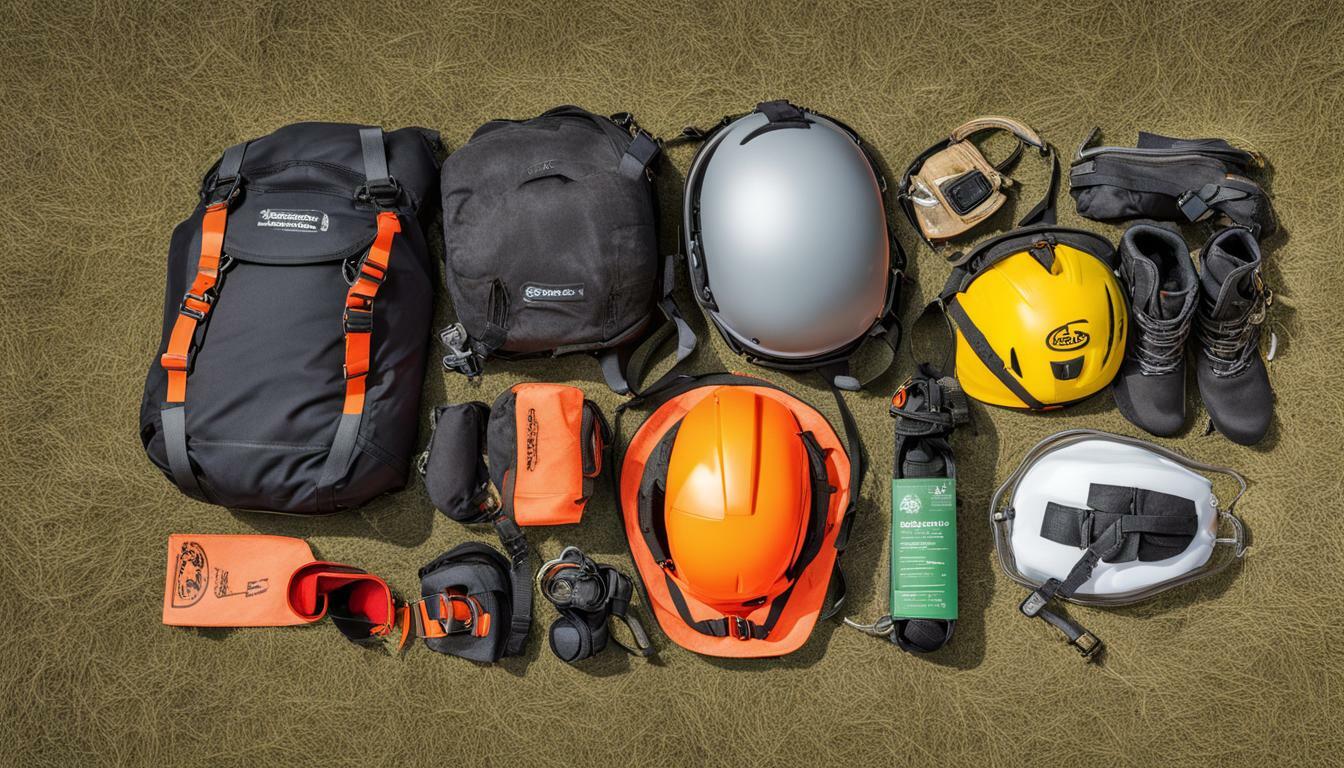
Adhering to safety compliance regulations and standards is crucial for the safe operation of helicopter tours. Operators must ensure that all safety equipment, including first aid kits, is up to the required standards and regulations set by the CAA. Passengers can enjoy their scenic tours with peace of mind, knowing that their safety and well-being have been prioritized.
Training and Education: Equipping Staff for Emergency Situations
Ensuring the safety of passengers during aerial adventures requires a well-trained and knowledgeable staff equipped to handle emergency situations. Proper training and education are vital to equip staff with the necessary skills and knowledge to respond effectively in critical situations.
Training programmes should cover a range of topics, including first aid, emergency response procedures, and risk assessment. Staff should be trained to identify potential hazards and assess risks to prevent incidents from occurring. In the event of an emergency, trained staff can quickly and confidently respond to the situation, minimizing the potential risks and ensuring the safety of all passengers.
It is essential to keep staff training programmes up-to-date and relevant to the current industry standards. Staff should receive regular training updates to ensure they are aware of any changes to regulations, equipment, and procedures. Ongoing education can also help staff to develop their skills, improve their problem-solving abilities and increase their overall effectiveness in responding to emergency situations.
At [company name], we prioritize the safety of our passengers and are committed to providing our staff with ongoing training and education to equip them for any emergency situation that may arise during helicopter tours. Our staff members are trained in accordance with the industry best practice guidelines to ensure their readiness to handle any emergency situation.
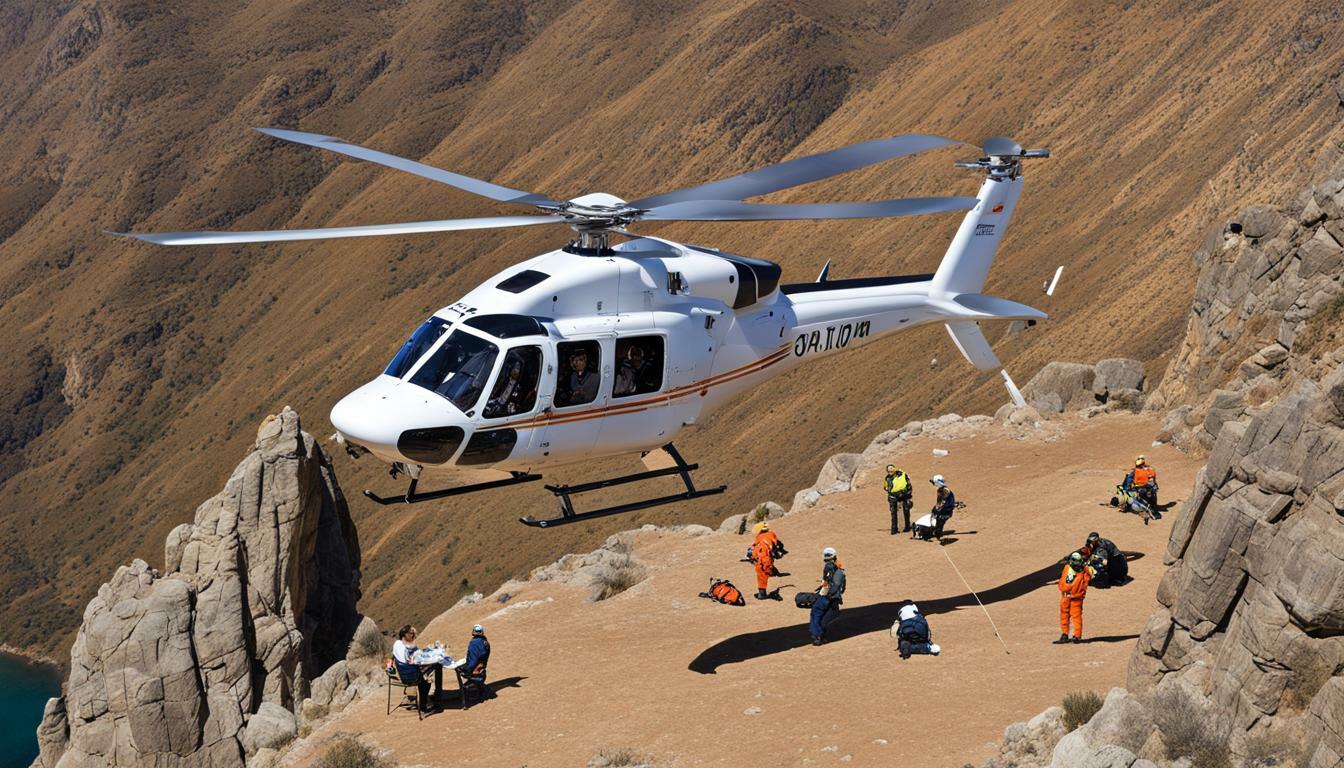
By investing in staff training and education, we ensure our employees are confident, competent, and prepared to handle any emergency situation that may arise during aerial adventures. Our passengers can enjoy their scenic helicopter tours, knowing that they are in safe hands.
Assessing Risk: An Integral Part of Aerial Adventure Health
When it comes to aerial adventures, risk assessment is a vital aspect of ensuring the safety and well-being of passengers. By undertaking a thorough risk assessment process, helicopter tour operators can identify potential hazards and take proactive measures to reduce the risks associated with these hazards.
The risk assessment process involves evaluating the likelihood of a specific event occurring and the potential consequences of that event. It also includes identifying the various hazards that may be present during a helicopter tour, such as adverse weather conditions or mechanical failures. By assessing these risks and taking steps to mitigate them, operators can ensure that their tours are as safe as possible.
Additionally, risk assessment is an ongoing process that needs to be regularly reviewed and updated. As new hazards and risks emerge, operators must take appropriate action to address these issues and ensure that their tours remain safe and enjoyable for all passengers.
| Risk Assessment Process: | Purpose: |
|---|---|
| Identify potential hazards | To evaluate the risks involved in helicopter tours |
| Assess the likelihood of a hazard occurring | To determine the level of risk associated with each hazard |
| Evaluate the potential consequences of a hazard | To determine the severity of each risk and its impact on passengers |
| Mitigate risks through appropriate actions | To minimize potential hazards and maintain a safe environment for passengers |
By prioritizing risk assessment and implementing appropriate safety measures, helicopter tour operators can provide an exciting and enjoyable experience for passengers while ensuring their safety and well-being. Remember, when it comes to aerial adventures, safety should always be the top priority.

Conclusion
Helicopter tours offer a unique and thrilling experience for adventure seekers. However, these aerial adventures also come with their own set of health and safety considerations. It is essential to be prepared for emergencies, which is why having the right first aid kits and safety equipment is crucial for any helicopter tour.
We have discussed the components of helicopter tour safety kits and highlighted the importance of having adequate first aid supplies tailored for aerial adventures. We have also explored the other safety equipment that should be considered, including emergency response supplies and additional safety measures that can enhance the overall safety of helicopter tours.
It is also important to adhere to safety compliance regulations and standards and to provide training and education for staff members to equip them with the necessary knowledge and skills to respond effectively to emergencies. Furthermore, conducting a comprehensive risk assessment is an integral part of ensuring the health and safety of passengers during aerial adventures.
In summary, being prepared for emergencies and prioritizing safety should be at the forefront of any helicopter tour. By following the guidelines and recommendations outlined in this article, tour providers can ensure that their passengers have a safe and enjoyable experience in the skies.
